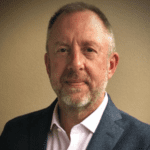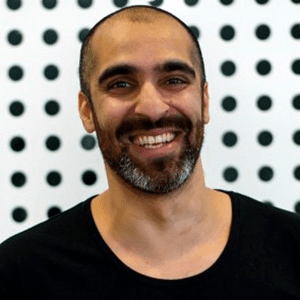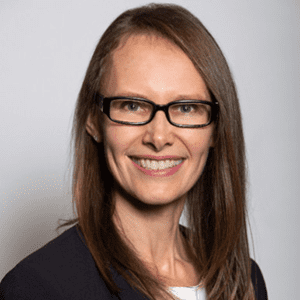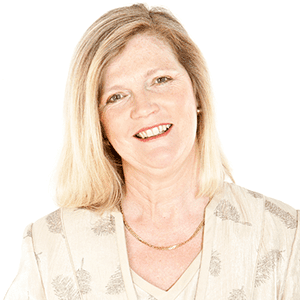

#36: Leadership across boundaries
TEC Chair Martin Cayzer talks about what he got right and leadership lessons learned on leading teams across boundaries. Hear how Martin fostered collaboration and how he used imagery to drive focus and clarity for success.
Excited to jump into a CEO role for a division of a larger European company with multiple offices and locations throughout the US, UK and Europe. His objective at the time was to bring this collection of businesses together under one umbrella to form a truly global enterprise. Martin underestimated the power, but also the challenge of bringing a team together, specifically leadership teams, across boundaries: geographic, time zone, cultural, disciplines, and language to name a few.
Stephanie: Hello and welcome to TEC Live. Stephanie Christopher here, chief executive of the Executive Connection. TEC connects CEOs, executives, and business owners to the world’s largest business leader network.
Our guest today is Martin Cayzer and executive coach consultant and advisory board Chairman. Man’s executive career has taken him through the UK, Europe, us Australia, and New Zealand. He’s managed functionally diverse teams across multiple geographies for businesses engaged in technology services and solutions to the film, TV, and broadcast industries. Interesting. We’ll get onto that for sure.
Martin strength has been in developing highly engaged, high performing teams, supported by strong strategies and competitive tactics that differentiated those businesses in the market. Martin Cayzer, welcome to tech live.
Martin: Thank you Stephanie.
Stephanie: And today we’re going to be talking about leadership across boundaries, which feels it gives us a nice broad frame for our conversation. First of all, I have to ask you – TV film industry. Tell us about that.
Martin: Well is pretty cool I have to say.
Stephanie: Yeah, that’s what I was expecting. What was the coolest thing about it?
Martin: Oh, look from the perspective of supply and services and solutions. It’s always behind the camera. So in many ways, it’s an industry and a role that is, the same as many, except that your clients are really cool people normally doing really cool things and you get caught up in them achieving their core goals, which is doing great films, great TV and supplying equipment to them. And they come to you and they say, we’ve got this great idea to do something. And maybe that technology doesn’t really exist right now. And they’re want to partner with you to come up with it. So in a sport where you get involved in very much behind the scenes, and then when you see it on a big screen when you see it on a TV and you can say to your family and friends, Hey, you know, we were involved in a little way in bringing that onto the screen. So yeah, it’s fun.
Stephanie: Really cool. And can you give us some, some of the outputs that you’ve been involved in?
Martin: Oh, lots. I guess the most recent one is we went, uh, when I went to the UK to be the CEO of a company, a European based company that developed high end technology for the film industry, cameras, lights, lenses, and the company took a huge leap to developed a very, very high end camera system that cost a lot of money to develop because it was only in small quantities, hoping that we would find a market for it. And we had an idea that the market would be a certain thing that this camera would be used on big films, but just for small sections of those big films, they’re really big visual effects scenes. And then they’d wheel it off and bring on another camera to do the drama and the dialogue, everything else. And we developed this technology over a number of years and on the very first production, it went on to an Academy award winning director and cinematographer shot on the very first scene and then looked at some and said, this is a wonderful drama camera. You know, we’re not going to give this back to you. And we looked at each other and we thought, well, the last three or four years of development, we sort of got this wrong is actually not just going to be used here. It’s going to be used throughout the whole film, most likely. So it was a happy accident. We developed it and it then went on to shoot his first film that it was used on was the Revenant.
Stephanie: Oh, wow. Lots of drama.
Martin: Lots of drama and has shot big visual effects, film, lots of Marvel films and Disney films, and has been a real success. But it goes out to show sometimes that you do all your planning, all your thinking, all your market research to come up with an idea and then you develop it and then you release it and you go, Oh, well, it’s not quite what we thought it was gonna be.
Stephanie: Boy, that’s a whole other conversation Martin, for another time for talking about startups or that whole idea of build it. And they will come involve the customer involved. The customer involve the customer. Very interesting. Yeah, that’s great. And so that camera I’m assuming is lives on or is there a next iteration of it?
Martin: It lives on and will continue to live on because it’s been very successful. And I think I can say this, not sure, but Baz Luhrmann is currently in production in Queensland, on film Elvis, with Tom Hanks and using a wonderful female Australian cinematographer called Mandy Walker who has got a number of credits to her name, last one, being Moulin. And she’s using this camera for Elvis. So here in Australia right now.
Stephanie: So watch out everyone listing for Elvis and the camera effects and Martin. Martin’s in some small or in fact probably large way responsible for them.
Martin: Oh, tiny way, but watch out for Mandy.
Stephanie: Oh, what a great intro. So let me take you then to you moving to the UK into the CEO role of that organisation. And I think you’ve told me before Martin, that you were an experienced CEO at the time, and there was something there about the boundaries when you hit that role. That became obvious right from the beginning. Do you want to tell me about that?
Martin: Well, I’ve been a CEO in Australia for 12 or 14 years, and then had an opportunity of responsible for the Asia PAC region of a large multinational company based out of the U S. So the people that I was responsible for were mainly in Australia and New Zealand. And then an opportunity came up to run a global business based out of Europe. And it was exciting. Part of it was the technology that we were going to develop. Part of it was getting your hands around, you know, a global organisation and really building into something more special even than it was, which was the challenge. So I got on the plane and went over to the UK and I felt pretty confident about, um, what needed to be done and how to go about it.
Stephanie: And you were born in the UK.
Martin: Born in the UK. although they saw me as an Australian now, so you can’t win that one. But the thing that I then really did underestimate – the power, but also the challenge of bringing a team together, specifically leadership teams across boundaries – which I hadn’t really done before in my previous roles and boundaries being geographical boundaries. So we had 15 offices across Europe, the UK and the US – different time zones, different languages, different cultures, different histories. Some of those businesses had been acquired over the years. Some of them were businesses that were organically grown from within the company. And this is a privately owned company for the last 102 years based out of Germany. So it wasn’t just a language issue. It was a multitude of issues. And these offices had largely, reported directly back to the headquarters. And the challenge in the role was to bring those businesses together under the umbrella of this division that we were creating.
Martin: So they were now part of a team together. And they had been, it had been sort of a loose confederation of businesses that knew each other and had worked with each other. But this was formally bringing these businesses together under one roof. And the boundaries were the things that really got me learning and understanding. The thrill was when I got it right, the power of a team to produce something it’s just amazing. It’s the biggest throw in the world for me. And the biggest thrill is creating that vision of what it is creating the goal. And everyone sees it. Everyone buys into it, everyone buys into their part of it. Then you achieve something through the power of that team that would never exist unless the team had come together to do it. That is for me the biggest professional thrill I could ever get, but it wasn’t always like that sometimes.
Stephanie: So tell me about when you did get it wrong. What, what did you get wrong in the boundaries? I mean, I can imagine those geographies, culturally having worked in multicultural world, you know, multi location, global organisations. You can trip over that very quickly, just even in language, not just, which language you’re speaking, but how you say something. So tell me about, yeah. Tell me when you got it wrong, Martin.
Martin: It’s just, as you said, Stephanie, sometimes it’s not even the words that you use and the words that are used back to you, it’s the tone and it’s understanding whether somebody is saying something because that’s what they really would like you to hear or whether it’s really what they mean.
Stephanie: So in some cases, you’d have people being very straight and then others perhaps talking around things.
Martin: Yeah, exactly. And also people come from different places with different histories and different experiences. When a new CEO comes on to the block and has got these ideas, you’re excited by them. And maybe you’re excited because some of the people that you’re working with are excited by them, but maybe not, everybody’s excited about it. Maybe that’s not what everybody wants to do.
And when you meet with somebody and you cross a boundary, geography, language, whatever it is, and you actually have a conversation with somebody, the number of times that I walked away from a meeting going, you know, that went pretty well. I think, yeah, that’s all good. We’re on the same page. We’re all going, well, I get on a plane from wherever I went back home. And then on a Monday morning, something happens, I get an email or a telephone call or something doesn’t happen. And you suddenly realize that that connection with somebody hasn’t been made. And that’s the, probably the aspect that I’m most underestimated is making that connection with every member of the team. So they really, really buy into what you’re trying to achieve as a vision. Cause it doesn’t just impact me, impacted the rest of the team. Cause they’re all very acutely aware people, senior people, and they can sense when they’re not all together in something. And when you can get everyone all together, boy, is that powerful.
Stephanie: That cuts across any kind of leadership role. What you’re saying about the team, the connection, the extra challenge for you then was the boundaries that you had to cross to get to the group to be high-performing. So how did you manage that? How did you manage, I love what you’re talking about – there it’s not necessarily what people were saying, it was the intention, it was how it was presented? It was how you spoke? Written communication can be a minefield counted across boundaries like that. How did you manage?
Martin: First or very early on in the role, I realized that the, the company as a whole and division I was responsible for, hadn’t really had an in-depth strategy document. So when I was asking the question, you know, what do we look like in three years time? What do we look like in five years time? There wasn’t a really clear answer to that. So trying to build a vision of ‘where we were going to go’ started with let’s take some time out here and it’s former leadership team and let’s create a vision of what we want to be in three years time. And that was a fairly robust debate about where we all wanted to be and how we were going to get there. And we got there after two and a half days. For the last half of a day, we invited in the CEO of the company though, the whole company, the larger company to give his view on what we’d done.
Martin: So we wanted to have that two and a half days between us, where it was, some of it was pretty raw, this discussion about what we were trying to achieve and do we have a consensus on the goals. And we didn’t want them to see that that’s ours. We own that. And then we brought him in and sat him through half a day of what we’d worked through and, you know, 80% of it he bought into and the other 20% we negotiated. And we walked away at the end of three days with a really clear plan of where we wanted to be and how we needed to get there. And whenever things got tough or hard, or we were losing some of that connection with the leadership team, that was something we could always go back to. That was the fundamental vision that we had in our mind.
Martin: And sometimes I’m a visual person, I guess, coming from the industry that I’m in. So sometimes I would just use some of the techniques that, you know, many times, many other leaders and managers use. So I’d use the bullseye. You know, sometimes we’d be having a conversation across boundaries and lots of ideas would come out. And I’d go up to the whiteboard and put a bullseye in the middle of the whiteboard and then a concentric ring around the outside and say, okay, today we’re talking about how we’re going to do this thing in three months time. So the only thing that goes inside that bullseye is what’s going to take us to that thing in three months time. We’ll have some great ideas that come out and we’re not going to discard them. We’re going to put them out in that concentric ring and we’ll come back to them later. But for the next two hours or whatever it might be, we are really going to focus on that bullseye. So wherever I could, it was trying to use visual, something that the team could see as a common goal that we were trying to do.
Stephanie: And that worked across boundaries obviously the visual works well then worked across boundaries.
Martin: It worked across all kinds of boundaries, language and geography and so on, but have to put the hard working at the beginning to get the fundamentals of is this the right approach, the right strategy? Are we going in the right direction?
Stephanie: Let’s talk about geographic boundaries. So US and Europe, it’s not too bad. As long as you don’t include Australia, that’s when it gets impossible for a teleconference, how did you manage having your team so dispersed?
Martin: It wasn’t too bad. The worst time zone was LA and Munich, I guess it wasn’t too much of a spread.
Stephanie: How much travel did you do?
Martin: When I was in the UK, travelling internationally, probably two to three weeks out of four.
Stephanie: You’re on a plane.
Martin: And, you know, today with how we’ve all adapted and use different forms of communication during the pandemic, we’ve realized certain things more possible than we thought. At the time I still believed that face to face was fundamentally the best way to get somebody to believe in you and trust in what you’re saying and wanting to do, especially when you’re crossing boundaries. And the other complication too, across boundaries, is that we had a fairly normal structured organisation, which was geographically based. So if somebody was the finance director or the marketing director of the US business, the same in Europe, the same in the UK. But when we wanted to do things as a group, we had to adapt a new way of thinking.
Martin: We didn’t want to create another entity, which was a head office, bringing new people in. We wanted to use the skills and talents that already existed in the organisation. So that overlaid a matrix organisation. So to complicate things, we then had people who were reporting normally in their territory, but then if they were a great technologist or a great marketing person or a great salesperson, whatever it might be, their matrix reporting on behalf of all the companies, as we developed the business meant that they then might also report to somebody else who once again, could be across a boundary somewhere else. So that complicated issues, but it also was the only way to achieve things using the skillsets and the expertise that we have.
Stephanie: Hmm. Really interesting. So with that in mind, that experience and your whole experience of leading teams across boundaries, what could a leader of today learn as every single leader is shifting in some way from a model that existed in January, February to a model now? That may be a radical transformation. It may be the future of work being brought the horizon, moving, ever, ever closer. What would be your thoughts now, the implications for a leader to be considering those boundaries?
Martin: It’s a real challenge for me personally. And I think probably for many to develop authenticity and trust in what you do and how you do that in a more virtual world, rather than in a face to face world. I mean, that comes by being consistent in what you do, whether it’s face to face or whether it’s in a virtual environment, but it’s really finding for you how you’re going to achieve that authenticity and trust in, in your group. And I think the other thing that is really important is often in the past your productivity as an individual is based on how long you were in the office. And that’s every industry. And probably we would just as guilty as anybody else in that. And now it forces us as leaders to measure someone’s productivity in different ways and measure it in an outcome.
Martin: So we had, for example, prior to COVID, we had somebody who was managing part of our business that required working through the night it was to do with logistics. So if a big shipment was coming from Mumbai or wherever it might be, freight and logistics would be at whatever time they occurred. And the film and TV industry is make it happen, make it now. So this person would work through the night sometimes, and then come in late to work. And what that person’s co-workers didn’t see was that person had spent seven hours on the phone of a night-time. So the perception was, well, this person isn’t pulling their weight because they arrive in the office at 10 and go home at four. So we had to come up with a way of how do you manage the perception of somebody who’s doing a great job?
Martin: So you measure their productivity, you show the team, the output of that person, the contribution that person’s making to the business in terms of its profitability. And then it actually went on from that, and with the blessing of the team, we changed that role to a contractor and that person then contracted to us and could also contract to other non-competing businesses as well. So they grew, their business gave us a great service, so the output was even better. But it didn’t matter when they were in the office, they weren’t an employee, they were doing it via another means. So it’s about being flexible, I think in your thinking about how you measure output, reward staff and identify someone’s contribution. When you’re at home on your screen, working really hard, you know, you want that virtual tap on the back and someone to recognize what you’re doing.
Stephanie: Yeah. The same rules apply, but it’s been interesting as a leader through the last seven, or however many months it is now, that that’s changed. That’s just changed automatically people aren’t, that kind of underlying politics is gone. And so working hard or not, or they’re in, or they’re not, or they’re leaving early or they’re coming in late, that’s gone because no one knows. And the way of measuring output now is through systems that actually bring with them far greater transparency anyway. Because if someone’s leaving at 4:30pm, you don’t know what they’ve done. If you were thinking they should be there till 5pm. But if you’ve got reporting and systems that show what everyone’s working towards, then that’s, it’s actually so much better for culture and accountability at the same time.
Martin: Absolutely. And efficiency.
Stephanie: It’s, it’s really interesting. What are the lesson Martin from or lessons from your time as a CEO, working across all kinds of boundaries that you think could apply to the CEO or business owner right now?
Martin: I think in my particular case, you know, really it’s carried on from the discussion about understanding in each individual, what their primary motivation is within the team. And everybody has their place, you know, the place that they want to be, what they want to contribute. And it’s trying to get a team together that is of diverse thought. I mean, it’s very much like a TEC group. And that’s, you know, it’s a challenge for all of us to try and achieve as we build our leadership teams and our teams around the world is to get a group that is really diverse in thinking.
When I first became a CEO, a very, very good mentor of mine said, ‘here’s a piece of advice that always served me well’. So this is going back quite a few years now. And he said, now you’re a CEO. You have to have an opinion. You can’t have an opinion as a CEO. And your role then is to make sure that everybody in your team feels that they can make a different view, a different opinion and feel open, that they can do that. And then your role is to work through, who’s got the best opinion, what’s the right approach. What’s the best approach at that time and be flexible in your thinking. And it’s really stayed with me that thought through a number of number of years is sometimes you go into a meeting, you’ve got to have an opinion to start things off, but an opinion, which isn’t, isn’t set in stone. It’s an opinion, which is, this is what I believe now let’s think about what else is there to change that opinion now and get the discussion going. And it’s really opened up people feeling really safe environment to have a diverse view, a diverse opinion. And that’s what really honestly attracted me to a TEC environment is a tried sometimes successfully, sometimes not in my work environment to do that as CEO. And that’s an easy transfer through to our TEC group I think.
Stephanie: That’s good. So it’s about perspective. So there’s the opinion, but there’s actually perspectives that may be well beyond what you’ve even considered. So interesting when you talk about leadership across boundaries, Martin, you’re talking about leadership, you’re talking about recognizing the motivation, the drives of the individual. You’re talking about how to foster collaboration and thinking about also, you’ve talked about, I love the bullseye. That is a beautiful image that how to have everyone very clear on where you’re heading as a team and then, and as a leader to drive focus on what you’re working with right now and how imagery worked for you.
Martin: Yeah. And I think the bullseye for me, as we talked about, everyone’s got an opinion and you want people to have an opinion. And what I would try to do is not even if that viewpoint, maybe isn’t a hundred percent relevant to what we’re discussing, or is it a little bit too out there for what we’re discussing? You never want to discard it. You just want to park it somewhere and come back to it, but also not distract you from the thing that you have to deliver on in whatever time period, three months time. So it’s just, for me, that was one of the mechanisms that helped me, my style. It helped my style.
Stephanie: Good. I think your style is very interesting and can see how that was successful for you in that role. And I think will serve you well in all of the different roles that you have in your portfolio going forward, but an interesting discussion and something I think every single leader needs to be considering right now. Martin Cayzer. Thank you so much.
Martin: Thank you, Stephanie. Thanks for the opportunity to talk.
Stephanie: That’s TEC live for today. CEOs are in the business of making decisions and leadership is the art of execution. I’m Stephanie Christopher and look forward to talking to you next time.



